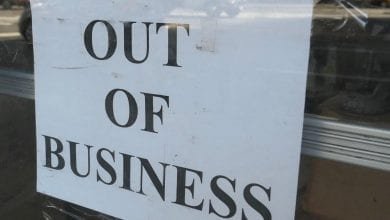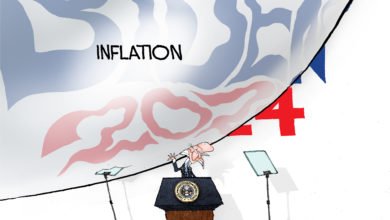Sacramento Mayor’s Christian Profile Covers Creepy Past
By M. Catharine Evans and Ann Kane
Former NBA star Kevin Johnson became the first African-American Mayor of Sacramento on the same night Barack Obama became the first African-American President. Shortly after his election, Johnson told the Sacramento Bee, “Obama and myself, we ran on the promise and the theme of change. No more business as usual.”
There were other similarities. Both were raised by their Caucasian maternal grandparents; both were relative political rookies; both were involved early on in the nonprofit education movement and both candidates won their respective races despite problematic pasts.
The two men also knew each other, according to Johnson. In several interviews before and after his 2008 election Johnson bragged about his closeness to Michelle and Barack Obama. The first couple was “folks he knew very well.”
Johnson even told Comedy Central’s Stephen Colbert in an interview on November 11, 2008 “They call me Little Barack.” Colbert responded by calling the mayor “Baby Barack.”
Now Mayor “Baby Barack” Johnson is a sought-after player in the education reform movement. Like Obama, Johnson’s controversial past has stayed under the radar and out of the headlines. Big media’s non-interest coupled with Johnson’s image as a Christian social conservative has gained him access to right-wing groups and school choice proponents on both sides of the aisle.
Johnson’s affable manner, his pro-business stance and decades-long advocacy for underprivileged children makes him a natural when speaking at forums, conferences, summits and universities across the nation. St HOPE, the nonprofit organization founded in 1989 put Johnson on the map as a serious contender in the burgeoning private-public political climate.
As Chair of the US Conference of Mayors Task Force on Public Education, Secretary Duncan’s Mayor Advisory Council and National Council of Black Mayors, Johnson has come full circle from the days of jumping in his Porsche after a game and heading to the nearest hospital children’s ward in Phoenix. While KJ’s teammates partied at post game casinos and nightclubs, Johnson, with scant media attention, visited sick kids.
In Phoenix after signing a no-trade agreement with the Suns in 1993, Johnson devoted much of his time and money to children’s causes. The future mayor seemed to have a special affinity for young, disadvantaged youth right from the beginning. Speaking to an NBA reporter in 1995 he described the problems kids encounter when dealing with adults.
There is so much purity and innocence in young people,” he said after a recent practice. “They’re not tainted. The only thing that destroys kids, especially when they are young, is our own prejudices — I mean adults’ prejudice and the baggage that we bring to young people.”
By the athlete’s own accounts, this kind of introspection began in his undergraduate days at UC Berkeley. His roommate was Jewish and one of his best friends was a devout Muslim, Mohammad Muqtar. Their late-night discussions centered on politics and religion, inspiring Johnson to make a commitment to help young people. He soon became a born-again Christian determined not to let the “role-model thing” be “tarnished by hypocrisy.”
Drafted by the NBA in 1987 Johnson fulfilled his promise to create more opportunities for kids trapped in crime and drug infested neighborhoods
The Sacramento native founded St. HOPE (Help Our People Excel) Academy in 1989 shortly after being traded to the Phoenix Suns. He gathered together a group of 12 boys that summer based on the fact Christ “had started with 12 disciples” and if it was good enough for Jesus, he figured, it was good enough for him.
The boys took after-school courses in trailers on the campus of Johnson’s old school, Sacramento High, where volunteer teachers tutored them in reading, writing and arithmetic.
The following year Johnson met with prominent figures in the education field and began to raise funds for his own school. With the support of major sports stars he opened a 7,000 foot, million-dollar facility in 1992 right down the street from his childhood home.
Girls attended on Tuesdays and Thursdays after school; Mondays and Wednesdays for boys. Students were encouraged to pray in a designated small, secluded prayer room in the building. The program offered by St. HOPE Academy included academics, wellness training and spiritual edification.
A deeply-religious basketball star who participates in Christian Athlete Ministries, Kevin attends a Bible study before each game and stresses the importance of The Holy Book to the kids of St. Hope, just as he teaches them the value of their heritage.
Johnson would serve as the CEO of St. HOPE Academy from its inception until January 2008, serving at-risk youth from dysfunctional families. Eventually his nonprofit afterschool program expanded into St. HOPE community revitalization project, St HOPE Public Schools, a pre-K to 12 charter school district serving 2,000 students; St. HOPE Neighborhood Corp (Hood Corps) and St. HOPE Development Company which has made millions in development projects
Johnson, now President and CEO of the Kevin Johnson Corporation, meets regularly with the high-rollers of education reform like Bill Gates and Eli Broad. In 2010 the Broad Foundation pledged $500,000 to Johnson’s new nonprofit STAND UP. STAND UP promises to provide Sacramento with one of the finest public education systems in the country emphasizing school choice, accountability, parental involvement and resource development.
The Corporation also oversees multiple specialized organizations as well as coordinating Johnson’s many appearances and speaking engagements. Johnson handles it all with coolness; he still sees himself as one of Christ’s disciples. Just recently the Cal alumnus addressed students at Berkeley telling them he “felt a responsibility to speak up for the destitute, the poor, the people who don’t have a voice.”
Johnson’s money, fame, political connections and faith-based altruism has helped the retired NBA star in his own race to the top. They’ve also acted as effective tools in quashing critical questions about the “baggage” KJ may have brought to young people as an adult.
Not listed on Johnson’s impressive resume is an alleged pattern of behavior involving charges of sexual molestation that have gone mostly unnoticed by groups involved in education reform like the socially conservative Joe Foss Institute in Arizona, which recently honored Johnson at the Stars and Stripes Classic.
If Obama wins a second term, it’s a sure bet ‘Little Barack’ will be a valued member of the team. So it’s time for Americans on all sides to take the blinders off and begin to vet personalities like Johnson who not only have access to children but play pivotal roles in transforming education.
Liars and Sluts
A once in a lifetime accusation of sexual misconduct involving a 29-year old pro-basketball player and a 16-year old girl might not elicit a Weiner-type response from the mainstream media. But more than one, with a space of twelve tears in between and involving more than one alleged victim, should at least garner as much attention as a grown man sexting grown women.
In March of 1995 Kevin Johnson, pro basketball player for the Phoenix Suns, met 15-year old Mandy at a videotaping of a public service project warning teens about the dangers of handguns. The celebrity talked with Mandy and other young people in attendance.
A couple of months later, a day before Mandy’s sixteenth birthday, she and her friends were at Coffee Plantation in Phoenix. Johnson was also there and invited the group to his table. He ended the encounter by handing Mandy his business card and telling her to call.
Mandy’s mother later recalled to police that Johnson told her Mandy had lots of potential.
Mandy followed up with a phone call and soon Johnson was sending her flowers, gifts and spending a lot of time with her over the summer. His many youth programs and his reputation as a counselor and friend to troubled teens, (some boys even lived at his Camelback Mountain home) was already well-established. In addition, he encouraged the teenagers to follow the fundamental Christian principles of abstinence and clean living.
Mandy, like many teens with a lot of troubles at home — no father, an apathetic mother and a history of depression — had emotional problems. Just the kind of person Johnson hoped to help and mentor toward success.
According to Mandy, her therapist, and police reports, Johnson’s alleged contacts with the underage girl in the summer of ’95 ranged from going to the movies, dinner, hugging, showering together in his guesthouse, touching on breasts, buttocks, legs, stomach, and fondling of genitals. At one point Mandy told investigators she thought “it was kind of weird that he [Johnson] was spending every night of the summer with a 16-year old girl.” Mandy described in detail the alleged sexual contact, but made it clear intercourse never took place. When training camp started for Johnson in the fall he rarely saw Mandy.
Fred Hiestand, Johnson’s lawyer and father of Kevin Hiestand (also Johnson’s lawyer and longtime friend), claims he suggested Mandy get help for some psychological problems; she was eventually hospitalized for depression and anorexia in April 1996.
Johnson resumed his interest in Mandy during her treatment and after her release. At one point they met and Johnson told her they could “challenge” each other to overcome their problems; hers was an eating disorder and his was “with sex,” according to her statements.
Mandy then started to see a counselor after her discharge from the behavioral health facility. After a few sessions, therapist Kristan Larson soon discovered that “KJ was very important” to her client.
Around July of 1996 Larson started to suspect Mandy’s and Johnson’s relationship went beyond the normal boundaries of supportive mentoring. Before she went to authorities Larson contacted Johnson who told her he wanted to be a part of the girl’s treatment.
When Larson indicated to Johnson Mandy seemed to be hiding something “sexual in nature” that occurred between him and the girl the previous summer Johnson responded, “Well, define sexual.” He then admitted “yeah, there was an incident that occurred numerous months ago…and I was just trying to comfort her.” Johnson said it was “along the lines of a hug.” Johnson then told Larson “he’d be praying for us.”
When Larson related the results of the two conversations with Mandy, the girl was outraged Johnson had denied any overt sexual contact. At that point Larson went to the authorities.
In July of 1996 the police arranged a “confrontation call” between Mandy and Johnson. Even though KJ had been tipped off about the allegations against him, the point guard was still surprisingly unguarded.
At the start of the transcribed call Johnson addressed Mandy by her pet name “Whiskey” and he asked her “Can I say something off the record?…I miss you bad…”
When she asked him whether he thought “us being naked together or taking a shower was normal, or healthy?” Johnson responded, “I told you the judgment was not in the best…and I’m sorry about that, and, again, I felt we talked about that and you’re looking at it different than I’m looking at it.”
Arizona’s Maricopa County, and the district attorney refused to file charges citing lack of physical evidence and an inconclusive confrontation call. In April of 1997 a civil attorney, Kent Turley, on behalf of Mandy, demanded a payment of $750,000 from Johnson or else he would file a very public lawsuit.
Despite your current, very positive image and persona, wrote Turley, the girl’s experience with you will cause us to use the theme in any litigation that you were in fact a sheep in wolf’s clothing.
But Hiestand contended Johnson was “no Jekyll-and Hyde guy” and that Mandy was a liar, “mentally unstable” and “loony.” Johnson eventually paid out $230,000 to his accuser.
The story gained little traction as sports media figures declined to go after Johnson.
Bruce Jacobs, a local radio host, scheduled an interview with a reporter from the New Times in Phoenix that broke the story in 1997, but pressure from the Suns made him cancel at the last minute stating:
I don’t want to publicly humiliate Kevin any more than he’s already been hit… I think K.J. is a little weird. But what happened here is I think some sick slut and her attorney fed you the story after K.J. told them to take a hike in the lawsuit.”
Interestingly, New Times writer Paul Rubin noted the term “sick slut” was used by one of Johnson’s attorneys in a discussion with the publishers before the story went to press.
“The Situation Grossed Me Out”
When Phoenix police sex crimes detective Art Smith asked Mandy in July 1996 why she felt compelled to come forward she told Smith she feared she was not the only one Johnson had “abused.” Mandy never recanted her story.
Twelve years later in 2007 former NBA star Kevin Johnson found himself on the receiving end of allegations eerily similar to those he faced in Phoenix. This time it was in his hometown of Sacramento at his alma mater Sacramento High School, a charter school overseen by Johnson’s ST. HOPE Public Schools.
Erik Jones, a teacher who resigned in 2007 over the mishandling of sexual misconduct charges against Johnson, told police a female student had come forward during a retreat in Yosemite and confided to him, a female counselor and two classmates that Johnson had touched her breasts while massaging her shoulders.
The teen demonstrated for Jones and the others how Johnson allegedly came up behind her as she was working on the computer at her desk “and how his hands dipped down to her breast.”
The situation grossed me out and that was not the first time, Jones quoted her as saying. Johnson has also done this with other girls in the class. And with one of the Hood Corps students he tried to crawl into her bed.
Police investigated the Yosemite allegation as a child sexual abuse case because the accuser was a minor. The student told Jones she was afraid to tell anybody what Johnson had allegedly done because he was “a family friend, but I feel creeped out when he does this,” she added.
Hood Corps, a division of St. HOPE is a nonprofit that receives funds from AmeriCorps. Under federal guidelines St. HOPE was required to report the allegations without delay.
Instead an internal investigation was conducted after Jones brought the matter to the attention of the school administrators. Kevin Hiestand, son of the lawyer who handled the 1995 Phoenix accusations, was also Johnson’s business partner and childhood friend. As Johnson’s partner and legal counsel, Heistand’s dual role required a waiver from the school board to take part in the sexual abuse investigation. No such waiver was ever requested.
Hiestand interviewed Johnson’s accuser before a formal police investigation ensued. The girl ended up recanting her story. In his May 15, 2007 resignation letter teacher Erik Jones described how Heistand handled the situation.
St. HOPE sought to intimidate the student through an illegal interrogation and even had the audacity to ask me to change my story.
Jones wasn’t the only one Hiestand allegedly tried to bully. A classmate, Dora Bromme, who was witness to the alleged victim’s statement to the Yosemite group, stated she was pulled out of class by Hiestand. He did not identify himself as a lawyer but rather as someone from human resources.
He stated that the accuser “told us that (Johnson) just kissed her on the forehead and gave her a pat on the shoulder and left.” Bromme told the Sacramento Bee, “I can tell you for a fact that’s not what she said…he was changing around the story.”
Another detailed account of inappropriate touching involving Johnson and an AmeriCorps volunteer was reported to a St. HOPE recruitment adviser, Jacqueline Wong-Hernandez. The police declined to investigate this matter because the young woman was not a juvenile and her complaint was not criminal in nature.
Story Spills into Congressional Investigation of St. HOPE and AmeriCorps
A congressional report by the House Oversight Committee investigating the firing of Inspector General Gerald Walpin by President Obama indicated that while Walpin’s investigators from AmeriCorp’s umbrella organization, Corporation for National and Community Service (CNCS) were looking into Johnson’s misuse of funds, they questioned the same volunteer who had previously opened up about her experiences with Johnson to Wong- Hernandez.
The volunteer told the investigators Johnson came to her apartment around midnight to go over grades she was entering into a database. He went into the bedroom and laid down on her bed, she sat on the edge to show him the work she was doing and he “cupped himself around her like a ‘C'” putting his hand around her hip.
A few weeks later she summoned the courage to tell Wong-Hernandez who confirmed the account with Walpin’s investigators. The day after she reported the sexual harassment she stated Johnson apologized to her. She then said Hiestand offered her a $1,000 a month until she left the program but she refused.
The Issa/Grassley report listed another alleged victim. She is thought to be the roommate of the woman Hiestand allegedly tried to buy off. In the Walpin document she confirms Johnson’s presence in the apartment the night of her roommate’s encounter with him.
The third volunteer/roommate stated on occasion Johnson “flipped up the edge of her skirt,” “brushed my leg with his hand,” massaged her shoulders, “and kissed her on the cheek.”
Before his mayoral election in 2008 when asked about the way St. HOPE handled the allegations Johnson told reporters they followed protocol and essentially there was no ‘there’ there. After the student recanted the Sacramento police found no merit to the case and dropped the matter.
Police never questioned Kevin Johnson, concluding there was no evidence of criminal conduct on his part. No charges were ever filed.
Another St. HOPE official was also named in Issa’s report. Johnson’s then fiancé and current wife Michelle Rhee, the former chancellor of DC Public Schools, held several titles at St. HOPE Academy: board member, consultant for the New Teacher Project, Chief Operating Officer and President.
When the allegations surfaced in 2007 she immediately flew from DC to Sacramento and told Wong-Hernandez she was making this “her number one priority and she would take care of the situation.” Rhee had several conversations with Walpin telling him Johnson “was a good guy.”
Rhee’s efforts at damage control involving sexual abuse allegations are especially contradictory and troubling given her own record of firing a DC teacher for similar accusations. “I got rid of teachers who had hit children, who had had sex with children, who had missed 78 days of school,” Rhee said. After making this wild statement, she later said she fired those teachers because of budget constraints. So, the sexual misconduct of one of the teachers apparently didn’t warrant firing — lack of funds was the problem.
Whether she was involved in the internal investigation machinations led by Hiestand is another question. No reports suggest the possibility.
Today, Johnson and Rhee appear together in cities and towns across the United States pushing the agenda of StudentsFirst, teacher accountability and school choice. With the sex scandals taken care of and the alleged victims now long silent the pair’s popularity soars.
Read more M. Catharine Evans and Ann Kane at Potter Williams Report.
“Being Kevin Johnson” originally posted on American Thinker on February 20, 2011.





